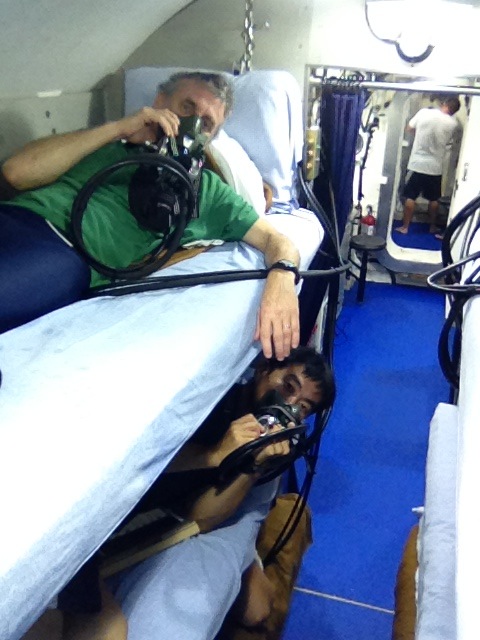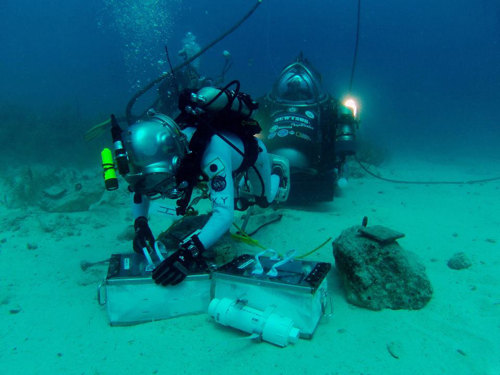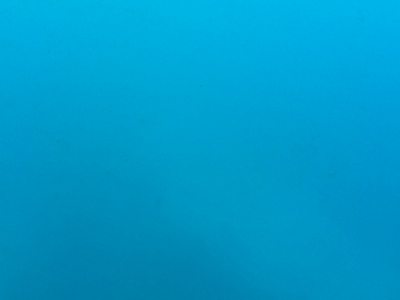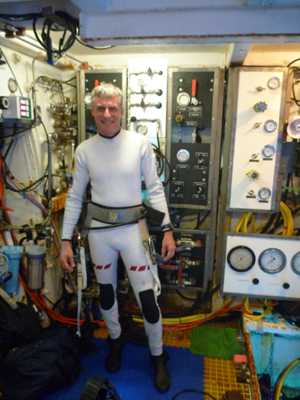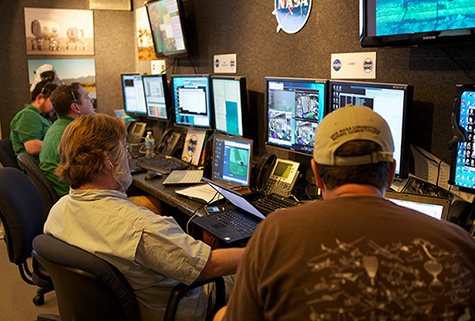By Dr. Stan Love (NASA astronaut)
 Image at right: Astronaut/DeepWorker pilot Dr. Stan Love prepares for a communications check in the DeepWorker submersible.
Image at right: Astronaut/DeepWorker pilot Dr. Stan Love prepares for a communications check in the DeepWorker submersible.
For the previous fewdays at NEEMO, the aquanaut crew has been moving around, taking geologic samples,and deploying science instruments as if they were astronauts in space suitsexploring a near-Earth asteroid. The buoyancy of the sea water counteractstheir body weight and makes them effectively weightless, as they would be neara small asteroid with very little gravitational pull. But it’s hard to workthat way. With no place to stand, it can take a lot of effort just to keep yourbody stable, and any work you do with your hands is clumsy and inefficient.
But now that NEEMO’smarine science dives are completed, the DeepWorker submersibles are availableto work jointly with the aquanauts. The subs provide two tremendous advantagesto our “spacewalkers”: mobility and stability. Instead of theaquanauts having to move from one place to another by going hand-over-handalong a rope, they can just ride along with the submarine. Instead of the aquanautshaving to fight to keep their body stable with one hand while trying to douseful work with the other, they can clip their feet into a “footrestraint” attached to the front of the sub and have a solid place tostand, plus the freedom to work with both hands. Part of our work at NEEMO thisyear is to quantitatively measure the time and effort it takes to do a widevariety of spacewalking tasks both with and without help from the subs.
So Saturday morning,our first pair of sub pilots, Serena and Bill, got in the water and drove theirvehicles down to a sand patch near Aquarius. Divers hooked communication linesto their sub so they could talk and listen on the same channels as theaquanauts. We had done some preliminary testing on the communication and ithadn’t gone well. But that day, to everyone’s immense delight, thecommunication worked perfectly! Serena and Bill did some test work with theaquanauts, and then returned to the surface.
 Image at right: An aquanaut adjusts umbilicals as astronaut/DeepWorker pilot Mike Gernhardt waits in the background.
Image at right: An aquanaut adjusts umbilicals as astronaut/DeepWorker pilot Mike Gernhardt waits in the background.
Mike Gernhardt and Iwere the sub pilots for the afternoon shift. The plan was for Mike to do thefirst set of timed and scored tasks with the aquanauts while I observed andlistened. But things did not turn out that way, as often happens in operationslike NEEMO. Exploration is interesting in part because you do not know what youwill find. And work in places like space, or the sea, is interesting becauseenvironmental conditions like space radiation, weather, or sea state cansuddenly change the operation in ways that are hard to foresee.
Out on Liberty Star, thelarge and beautiful ship that has come to support sub operations for the restof the mission, my sub was the first to go in the water. The crane hoisted meoff the deck and into the water and the lift hook disengaged. Immediately Iheard the voice of Jeff Heaton, the dive supervisor, on the radio: “Engagethrusters and move away from the ship!” The next second, the sub cabinjolted hard and tilted sharply, and I found myself wedged beneath the ship’sfantail between the rudders and the propellers (which had been turned offduring sub launching). I enabled the thrusters and gave full throttle in alldirections but the sub did not budge. Under the water my VHF radio could nottransmit or receive, and my location under the back of the ship was not accessibleto the through-water communication system we use while the subs are workingnear the sea floor. So I was on my own.
What had happened wasthat my sub had been immediately caught by a strong current and pinned againstthe ship. With no way to escape on thrusters, and the swell continuing to bangthe sub against the hull, the only option was to do down. I flooded the sub’ssoft ballast tank, which seemed to take rather a long time, and finally droppeddown away from the very bad spot I’d been in. Once below the ship I got apartial transmission on the through-water comm telling me to descend to thebottom and hold there. This I did, putting in some forward thrust as well sothat the current would not take me far from the ship.
I reached bottom onmixed sand and coral in about 90 feet of water and stayed there. The comm wasvery bad. Occasionally a call would make it through, but I wasn’t hearing muchand most of my transmissions went unanswered. I was able to tell Topside that Icould see no damage to the sub and that my cabin atmosphere was safe. Theyresponded with a recommendation to stay on bottom while they prepared torecover me. So I sat there and waited. I made test calls now and then,sometimes receiving an answer.
The current strengthenedeven more and began to drag the sub along the bottom. I still didn’t want todrift away from the ship, so I maneuvered over to a rock and let the currenthold me in place against it.
Nuytco Research, thecompany that owns the subs, has worked out emergency procedures for sub pilotsto carry out in case anything goes wrong on their flights. One of those casesis a loss of communication. For most dives, the instruction for the pilot is tostart a clock the first time an expected call is missed, and if an hour passeswith no communication they should bring the sub back to the surface. For ouroperation, since we were always going to be near the ship and in shallow waterand since communication was central to our job, we had agreed on a limit of 15minutes.
I nearly got through acouple of 15-minute intervals, but then a partial call would make it throughand I reset the clock. While waiting I watched the fish moving around the sub.A spotted eagle ray, black with vivid white spots, swam by. I got out my cameraand took a few pictures.
Finally thecommunication with the ship stopped entirely. I waited another 15 minutes, thengot on the thrusters. The current was still strong enough to make it hard todisengage from the rock I was next to. But the sub did come free, and I droveit away from the bottom. I kept an upward eye to make darn sure I didn’t comeup under the ship!
I needn’t have worried.The sub surfaced about fifty yards from the Liberty Star. Immediately Jeff cameover the VHF radio and guided me back to the crane hook. Recovery was swift andefficient, and soon I was back on deck enjoying the breeze and asking whetherI’d made the right decisions. Everyone assured me that I had, and Jeffcommended me on having actually read and followed the lost-comm procedure.Evidently not everyone does that. He also said that from their perspective,they had put me in the water and I had disappeared instantly. I’m glad I wasn’tthe only one who felt that way!
While Jeff and I werechatting, Mike from Nuytco came up and handed me a stubby, heavy, black plasticcylinder with a big blue-smeared bite taken off the edge of it. “Here’syour through-water comm transducer. Do you want to keep it?” Yes, I did. Iwill take it home and put it in my curio cabinet as a memento of an excitingday in the submarine. That ‘ducer sits high on the back of the sub, behind thepilot’s head, and it acts as the “antenna” for the system. If it’sbroken, no communication occurs. The blue color was bottom paint from theLiberty Star. Evidently the ‘ducer had taken the brunt of my impact with theship. That explained the bad communication.
After that, the rest ofthe day was kind of anticlimactic. The Nuytco crew quickly installed a newthrough-water comm ‘ducer on my sub and made sure it was fit for duty. I dranka bottle of Gatorade to replace the fluid I’d lost from sweat (both fromtemperature and stress, no doubt), then hopped back in the cockpit to do our now-badly-delayedmission to the habitat, this time with both subs and no mishaps. We returned toshore at dusk, with take-out dinner plates kindly provided by the LibertyStar’s excellent cook. Another day thoroughly seized.
Learn more about NEEMO at www.nasa.gov/neemo
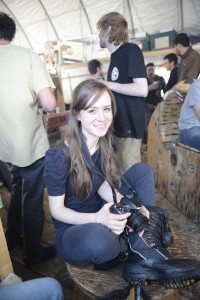

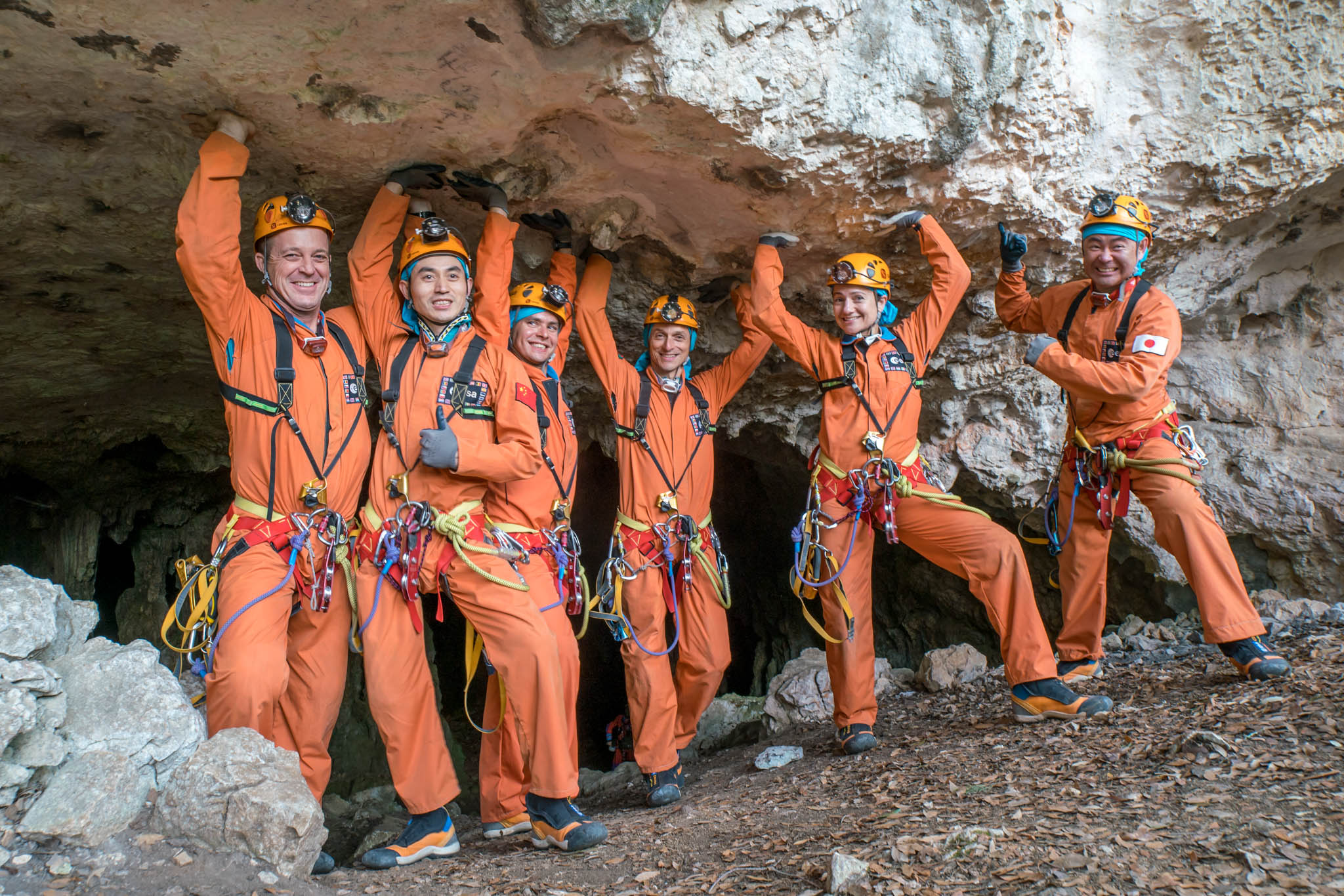
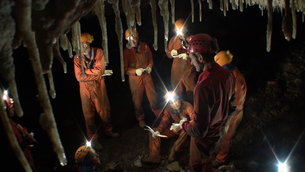
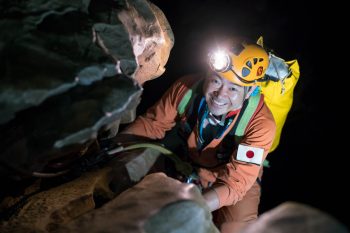
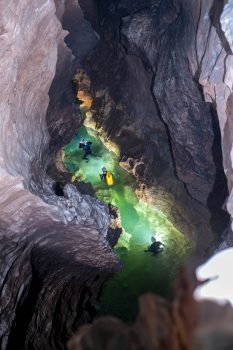
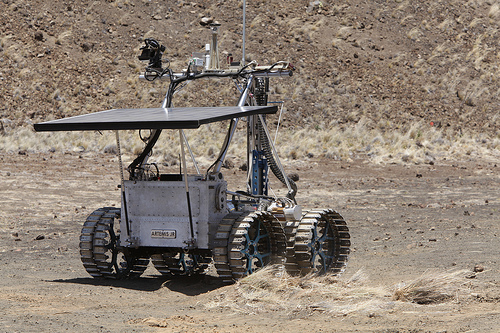 Image at right: The RESOLVE experiment package atop CSA’s Artemis Jr. Rover.
Image at right: The RESOLVE experiment package atop CSA’s Artemis Jr. Rover.





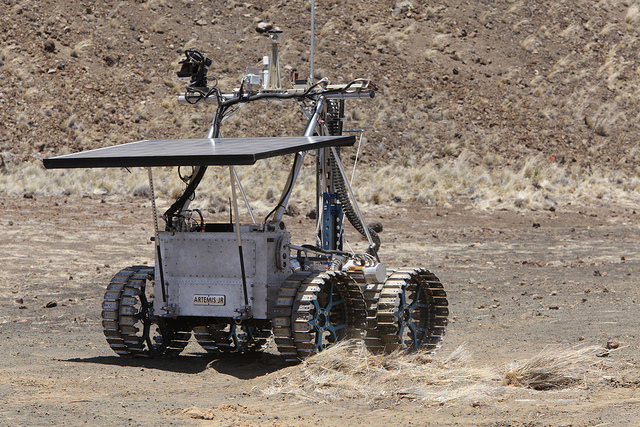 Image at right: Sitting atop the Canadian Space Agency’s Artemis Jr. rover, RESOLVE is an experiment package designed to find, characterize and map the presence of ice and other volatiles in almost permanently shadowed areas at the lunar poles.
Image at right: Sitting atop the Canadian Space Agency’s Artemis Jr. rover, RESOLVE is an experiment package designed to find, characterize and map the presence of ice and other volatiles in almost permanently shadowed areas at the lunar poles.